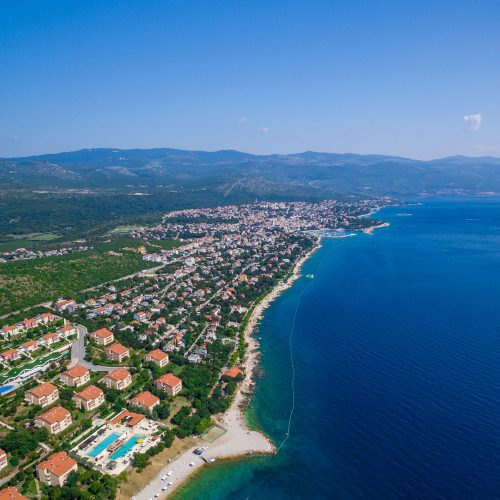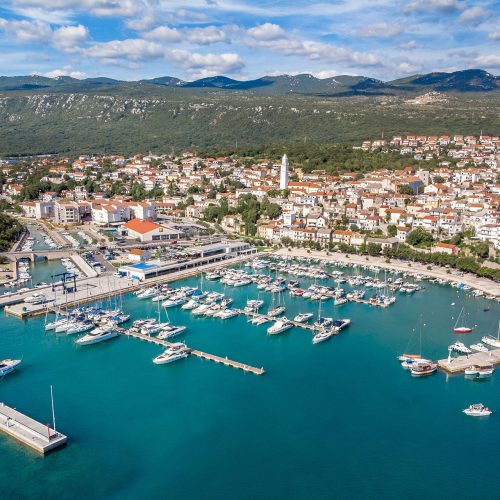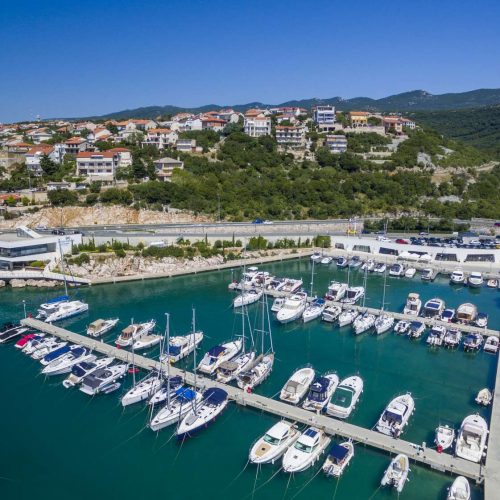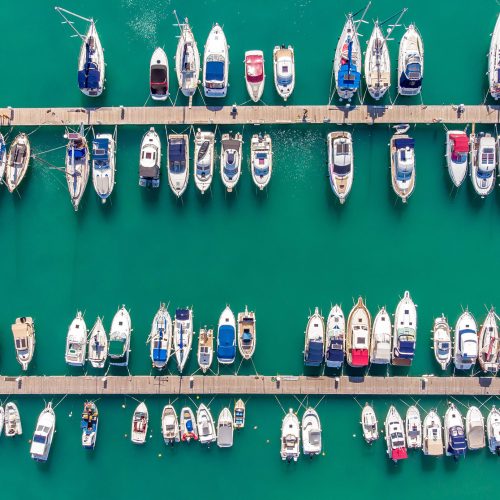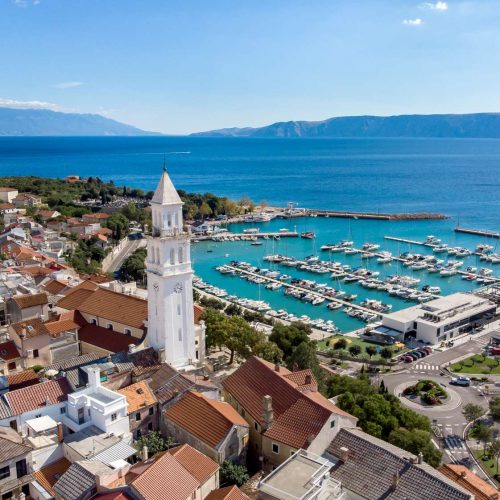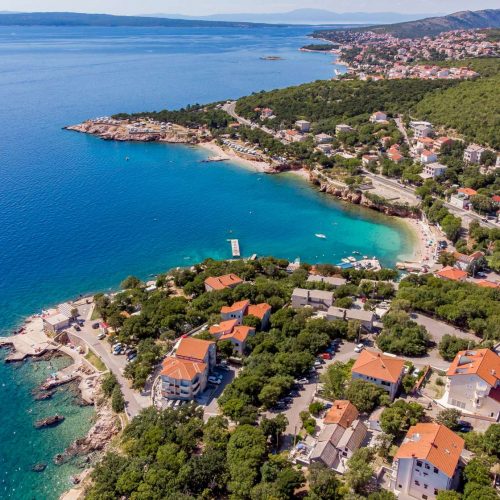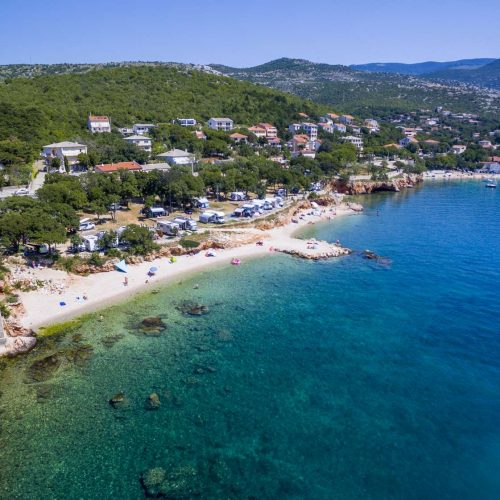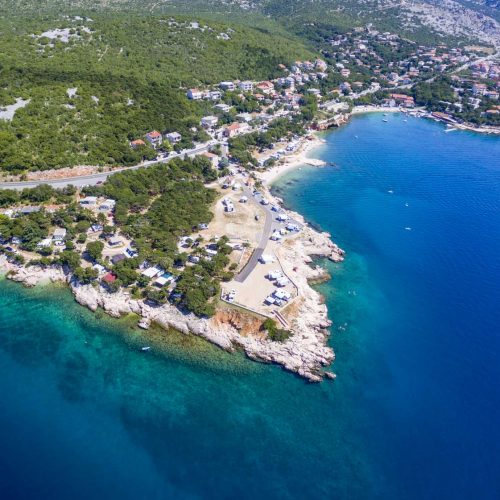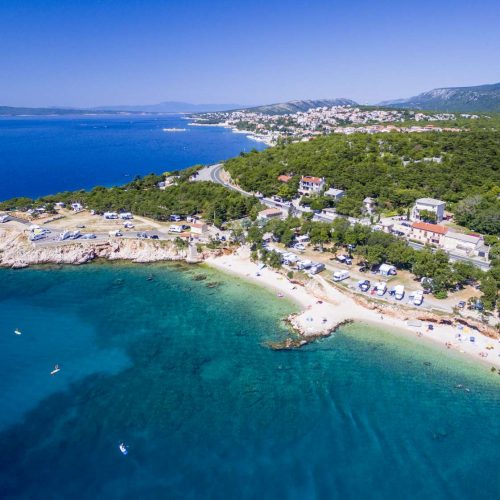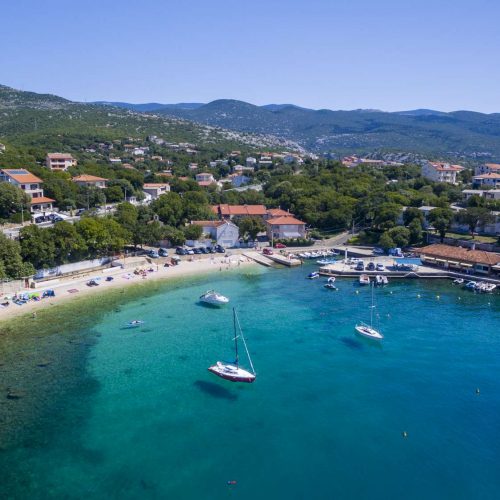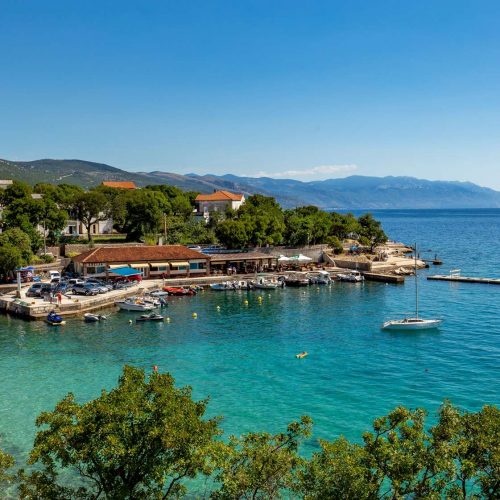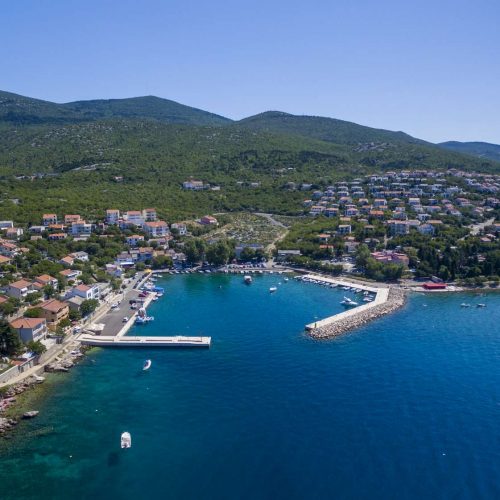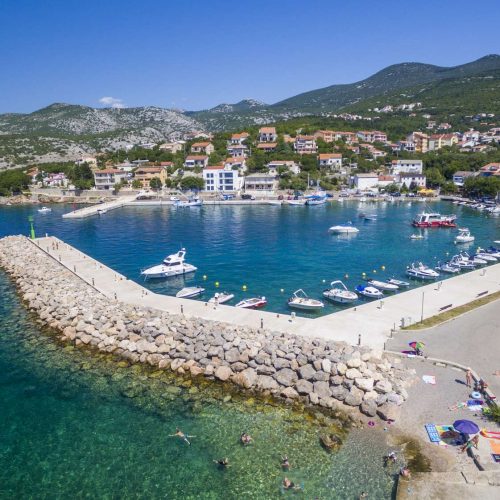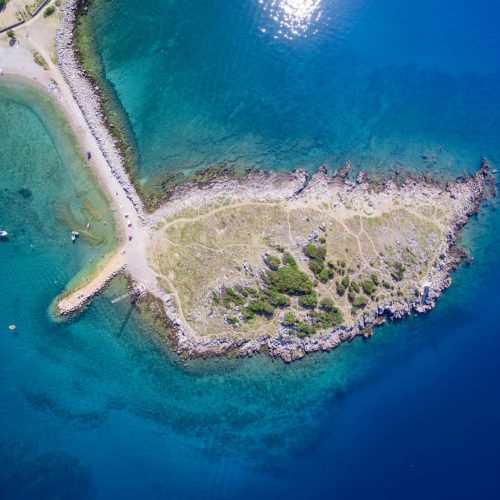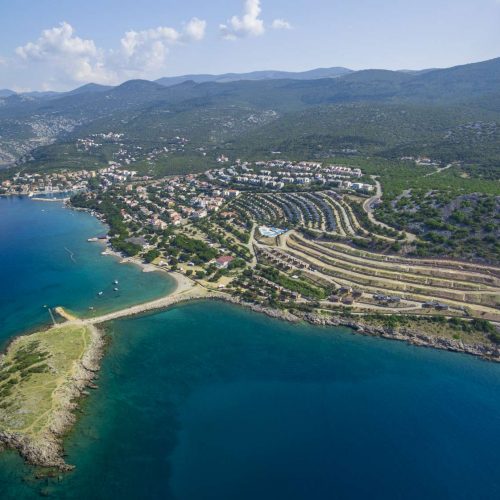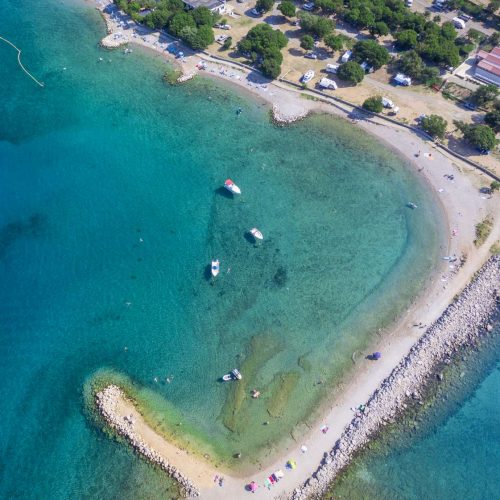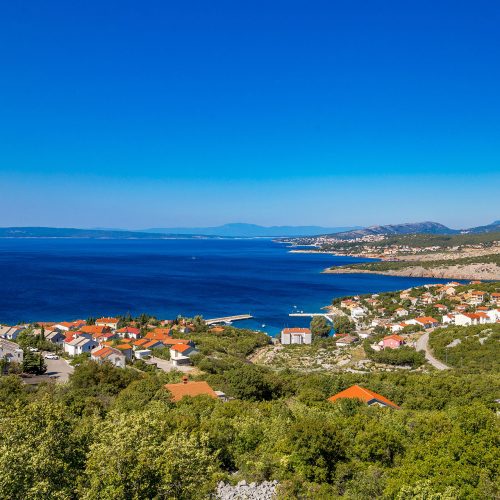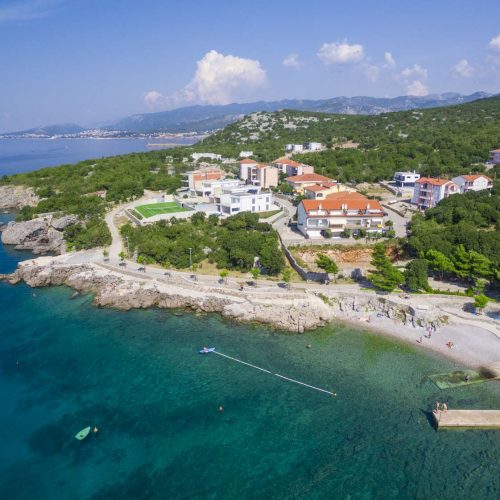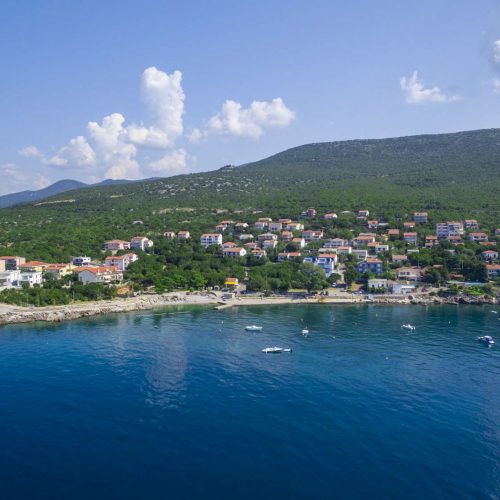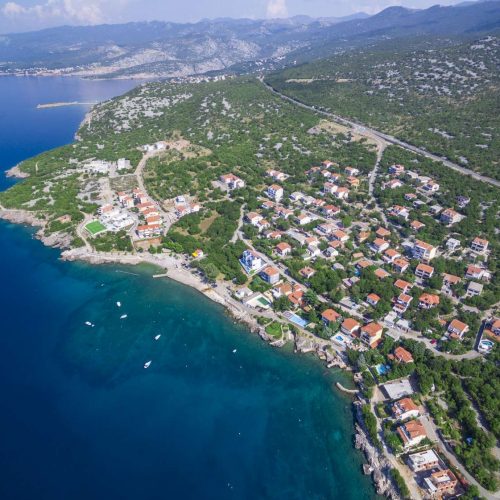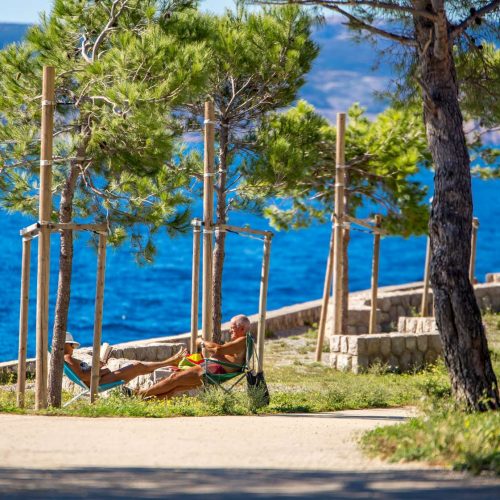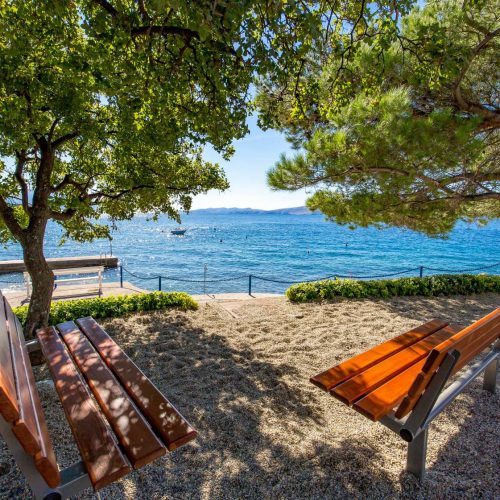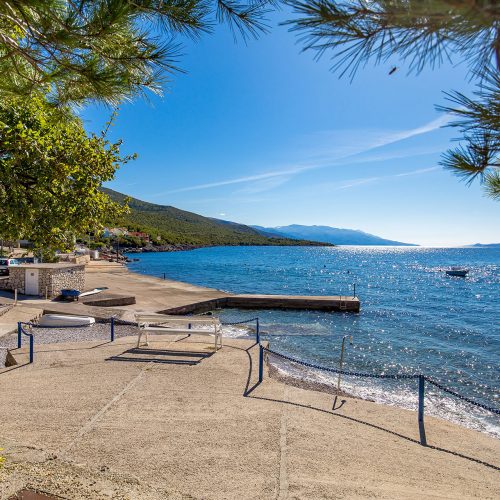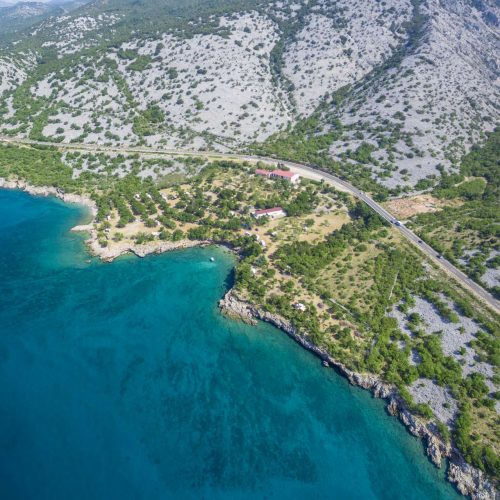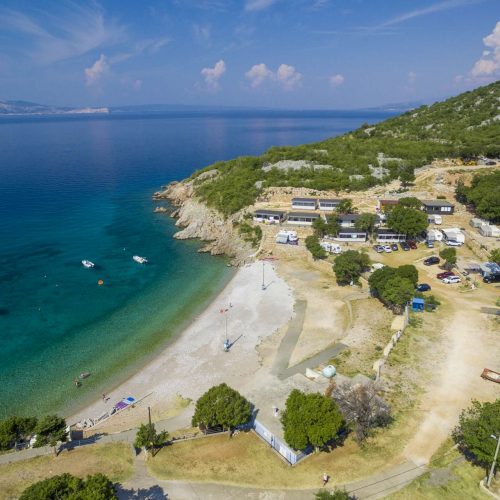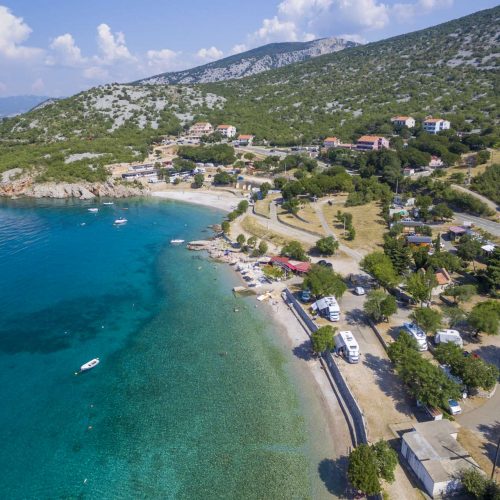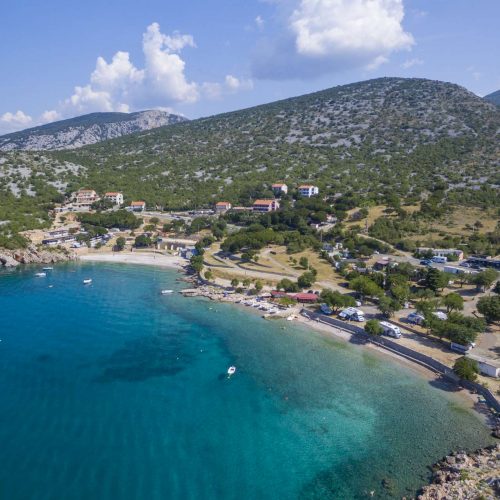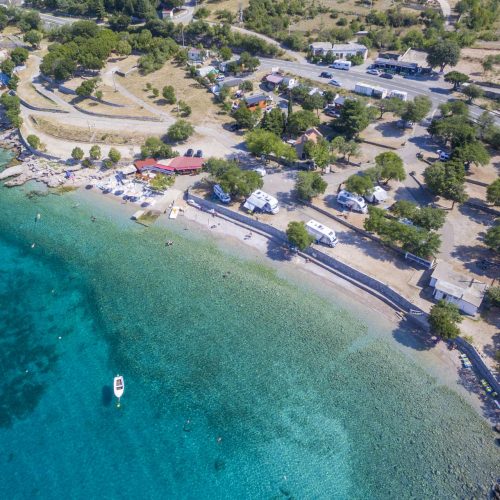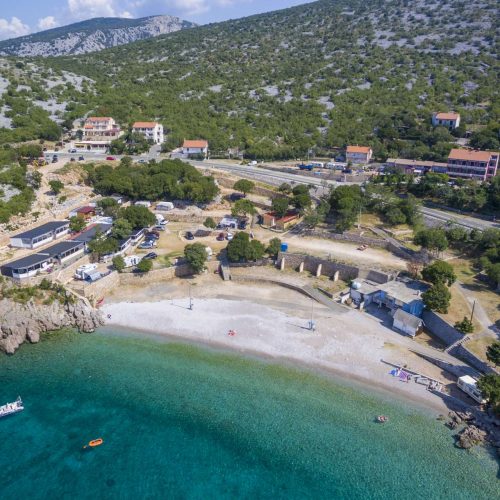Novi Vinodolski riviera
Novi Vinodolski
In the central part of the northern Croatian coast, from the old Frankopan fortress called Novigrad, the tourist town of Novi Vinodolski, the centre of today’s Riviera Novi Vinodolski, developed and expanded along the coast. This historical, political and cultural centre of the Vinodol principality (Vinodol – Vallis vinearia), the cradle of writers from Mažuranić family, proudly preserves the memory of the Statute of Vinodol from 1288, the oldest Croatian legal monument. Thanks to the area’s evergreen vegetation and mild Mediterranean climate, clean air and clear sea, Novi Vinodolski was declared one of the region’s first holiday resorts in 1878, shortly after Opatija.
The town is characterised by typical littoral architecture of buildings with white façades and red roofs, rising from sea level up the hill, to where the church and tower seem to stand guard over their surroundings. The specific shape of the town is what made Novi Vinodolski recognisable in the past, and it has retained that look even today.
Povile
Two kilometres south of Novi is the small holiday resort Povile. It has crystal clear sea and a beautiful pine camp with a small church of St. Mary Magdalene built in the 14th century, who is also the patron saint of the place. This bulging cape was named Punta Mandalena. In the shadow of pine forest close to the sea and far from the city crowd, everyone will surely feel like Robinson Crusoe.
Klenovica
Klenovica is situated nine kilometres south of Novi. It is a small fishing town which celebrates its fishermen and the sea. For people from Klenovica sea is life and the proof is the monument of a fisherman in the port. Today, Klenovica is known as a tourist destination ideal for rest and recreation. Its major characteristic is its clean sea and landscape. Klenovica includes nearby scattered hamlets Cvitkovići, Kalanji, Miletići, Kula-Komadine and Žrnovnica. One of the oldest written documents mentioning Klenovica originates from the end of the 14th century, the Statute of Senj from 1388, in which it is noted that the boundaries of the town of Senj extend all the way to Suha Kozica. Žrnovnica is a hamlet within Klenovica and it is mentioned in 1455, when it was written that there are mills in Žrnovnica under Ledenice.
Subterranean river in Žrnovnica makes the sea clean and that is why people today grow mussels, oysters and silver salmon there. Judging by the number of coastal tuna traps, tuna fishing was the most important fishing method in the area. This is additionally evidenced by the restored tuna traps that were removed in the 1950s. They are the symbol of hard life of fishermen and sailors. One of them is situated on the small island of St. Anton that looks like a peninsula because locals filled the path to it with large stones. Those stones also protect beaches in Klenovica from big waves and strong bura winds that are extremely cold during the winter. The vegetation is characterised by bare terrain with areas of small karst forests of maple, downy oak, white and black hornbeam and black ash. There, you will also feel the scent of black pine that is artificially grown. Klenovica is protected by the wooded hinterland in the North and tourists are attracted to picnic sites in the Krmpote area. If you happen to wander to the area, be sure to visit the hinterland with its wonderful belvederes that will surely win you over.
Smokvica Krmpotska
The promenade by the sea connects Klenovica with the neighbouring settlement Smokvica. Smokvica is located along the coast 12 kilometres from Novi, below the Adriatic Highway and the Krmpote mountain massif of Kapela. Warm coastal and cold mountain climate meet here, especially during winter months, creating exceptional air currents and strong winds, mainly in the east-west direction. Other sea currents benefit sailing enthusiasts. In summer, Smokvica has a mild and pleasant Mediterranean climate with warm sunny days and its temperature is mitigated by the breeze from the sea.
The place is supposedly named after the Mediterranean fig tree (Ficus Carica), which, along with the vine, was the most important fruit of our coast. Thus, in the old days, this plant was widely grown in Smokvica. Some families used to have up to two tons of this juicy and sweet fruit in the fall. For those who want to enjoy only the magic of clean sea, light summer breeze and untouched nature, this is the best destination.
Sibinj Krmpotski and Kozica
The settlements of Sibinj Krmpotski and Kozica are marginal settlements of Novi Vinodolski, located in the south-eastern part. They are ideal for escaping the crowd and everyday stress.

